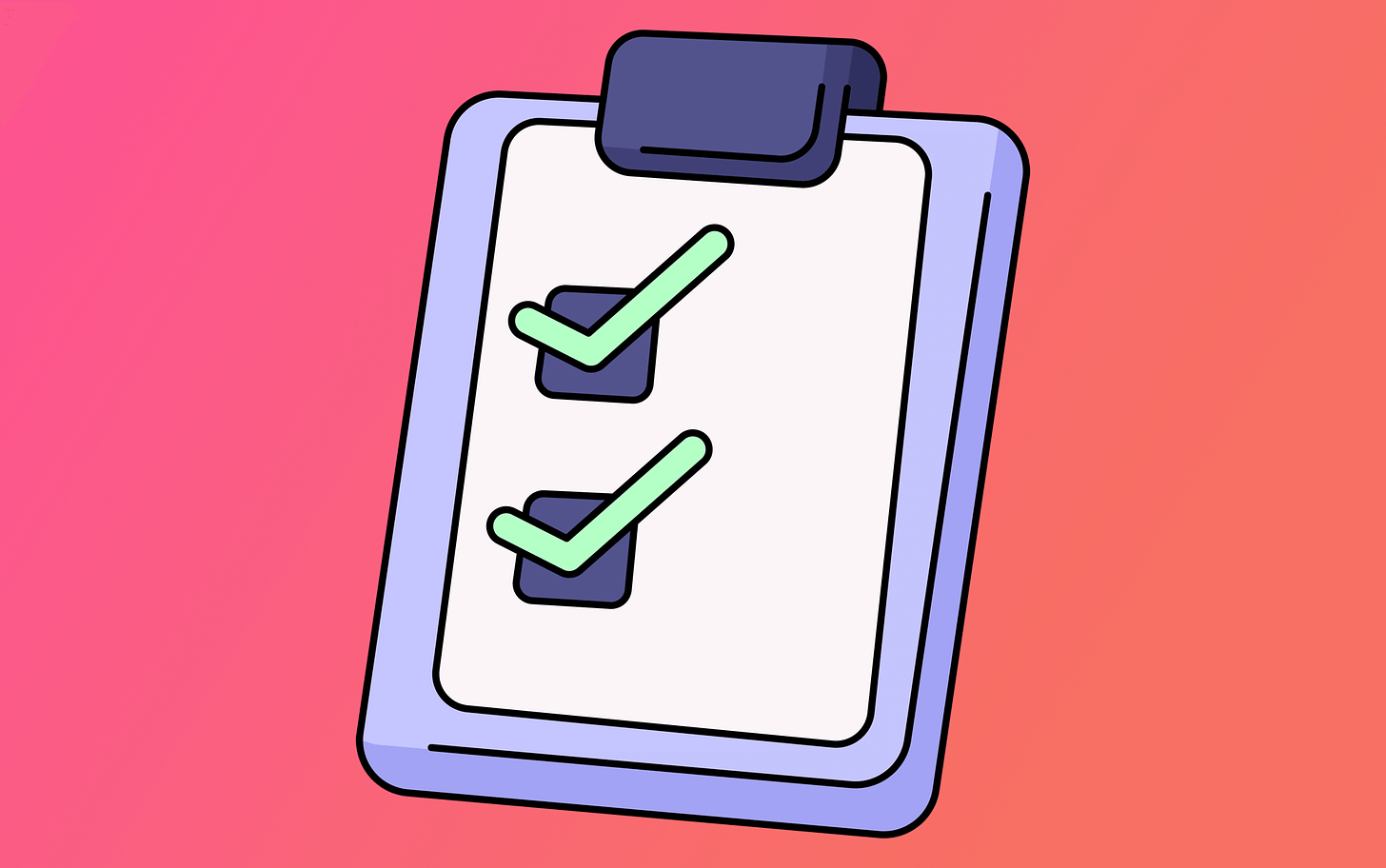How to Figure Out When to Call It a Day
The new system I finally came up with to define a full day's work
There’s a natural pitfall on personal projects, like my book publishing project.
When you’re working on a project with an endless to-do list, how do you know when you’re done for the day? When you can confidently feel satisfied saying, “I’ve done a good amount work for today”?
Much of the time, my answer was… never.
That’s the wrong answer, but it was the answer.
I struggled with calling it a day. Even if I’d completed everything on my to-do list, I still rarely ever felt like I’d done enough.
There was always something else I could’ve and should’ve done, if only I weren’t so lazy.
I know I’m not alone in this feeling, and I know it doesn’t just manifest itself with personal projects. It can manifest itself at a job with a lot of autonomy. It can manifest if you’re starting a business. It can manifest itself with housework. It can manifest itself with working out. There are others — endless others.
So I’ve tried a handful of techniques on when to call it a day before finding one that works:
Putting together a to-do list in advance and working until it’s done.
I come back to this technique a lot. And it usually works alright for me… until even the slightest thing goes wrong. I plan out my week in advance. I’m not too bad at scoping projects and estimating how long they’ll take, so I put an ambitious but achievable amount of work on each day.
And on Monday, I can usually do everything on my to-do list. Tuesday too, sometimes.
But by Wednesday, something is off. There’s a scheduling quirk, a minor illness in the household, a headache, a repairperson coming to the house and throwing off my entire schedule which pushes back my job hours, an unexpected power outage, surprise dinner plans, and on and on and on. I can’t predict what the “something” is going to be, but there’s always something.
When that “something” inevitably comes, I start pushing things from my to-do list to the next day.
That leads to a lighter day followed by an impossible day. Both are killers.
On the lighter day — which is lighter because I’ve bumped things — I don’t feel like I’ve done a full day of work. Then on the impossible day — featuring all the prior day’s bumped tasks — I can’t get them all done so I bump again.
The result: Maybe one or two days of feeling like I’ve gotten in a full day of work before the system collapses on itself.
Underplanning to give myself a chance to fill my schedule based on time and energy
After repeating the pattern enough times (meticulous planning, inevitable bumping, lots of feelings of failure), I decided to try something different.
Rather than planning each day’s satisfactory quantity of work in advance, as each day unfolds I grab items off my list and assign them to the evening. That way I can, in theory, always pick the proper amount of work based on how much time and energy I have.
But… this plan also failed. Without a strong plan going into the day, there were too many nights where I wound up doing nothing. Call it decision fatigue or human nature.
But for personal projects — which don’t have deadlines and require extraordinary discipline and willpower — choosing then doing an activity was a bridge too far.
Working a specific amount of time
My system revolves around doing 90 minutes of work per day on my personal projects. I can spread that work around (I do a lot around “reclaimed time”). But I decided I would work until I hit the 90-minute mark and call that a full day.
This system worked decent but introduced yet another problem.
Sometimes 90 minutes isn’t enough. Sometimes I’d have the energy to work more. Sometimes I’d want to get something done that took longer than 90 minutes.
But I treated 90 minutes as the maximum, not the minimum. Because if it were the minimum, then I couldn’t call a day “done” when I hit the 90-minute mark.
Each night it was a choice whether to keep going or stop. And with the introduction of that choice, I re-introduced the guilt of feeling like I was choosing not to do more.
The Projects, Bonuses, and Streaks system
Finally, we arrive at the system that’s been working for me so far.
I divide my personal projects into three categories:
The main daily project. A single, important project (or significant step in a larger project) that I’ve scoped at around 60 to 90 minutes.
Three small bonus tasks. These are three tasks that would add up to about an hour total between the three of them.
My streaks throughout the day. These are the streaks I do during my reclaimed time (like dictation during dog walks and writing 250 words during lunch).
I’ve made a deal with myself. As long as I get my main daily project and streaks done, I can call it a day with confidence. If I have any extra energy, I can dip into the bonus tasks too — but those are completely optional.
Some of the success of this method comes from the mental framing. Those bonus tasks are bonus tasks because I call them such. But — that’s working for me. The psychological game I’m playing with myself is working.
And until it stops working, the Projects, Bonuses, and Streaks system is helping me sign off every night with a resolute nod and smile.
To see what I’ve been working on this week in my journey toward 100 books, check out the Work Log.




